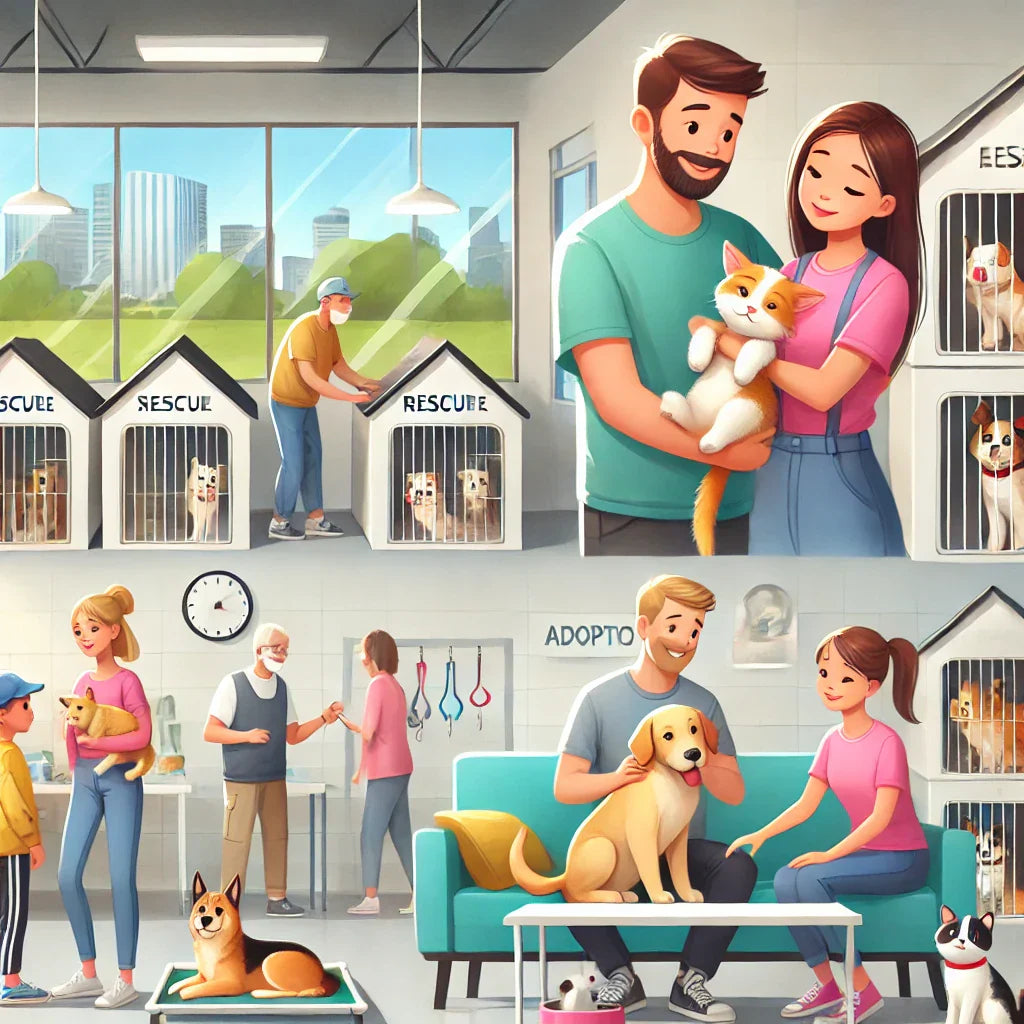
Rescue Shelters: Saving Lives and Finding Forever Homes
Share

Introduction: How Do Animal Shelters Save Lives?
Every year, millions of stray and abandoned pets enter shelters, hoping for a second chance at life. While shelters work tirelessly to find homes for these animals, many still face overcrowding and euthanasia due to limited resources.
Fortunately, shelter programs for stray cats and dogs have significantly improved adoption rates and reduced euthanasia. Programs like Return-to-Field (RTF) for community cats and Shelter-Neuter-Return (SNR) initiatives have transformed how communities manage pet overpopulation.
This guide explores:
✅ The benefits of pet adoption from shelters
✅ How shelters reduce euthanasia rates
✅ The impact of local animal shelters on communities
🐾 Read the ultimate guide to saving a pet’s life and learn how adoption can change lives.
1. The Benefits of Pet Adoption from Shelters
Why Choose Adoption Over Buying?
Many people wonder whether to adopt from a shelter or buy from a breeder. Adopting from a shelter:
✔ Saves lives by reducing euthanasia.
✔ Costs less—adoption fees are significantly lower than breeder prices.
✔ Supports ethical pet ownership and fights against puppy mills.
📌 Adoption vs. Buying Pets: Cost Comparison
📊 Shelter adoption costs range from $50–$200, often including vaccinations and microchipping, while buying from breeders can cost $1,000+.
🐾 Rescue vs. adoption for saving pets—learn which option is best for you.
2. How Animal Shelters Reduce Euthanasia Rates
🚨 Overpopulation remains a major cause of euthanasia. However, shelters implement strategies to lower these numbers:
✔ High-volume spay/neuter programs to control overpopulation.
✔ Foster programs to ease shelter overcrowding.
✔ Behavioral rehabilitation for pets with special needs.
📌 Correlation Between Shelter Stay Length and Stress Biomarkers in Dogs
📊 Studies show that longer shelter stays increase stress hormones in dogs, affecting their health and behavior. Fostering and quicker adoptions significantly improve pet well-being.
🐾 Microchipping’s impact on lost pet recovery—reducing shelter returns by identifying lost pets.
3. The Impact of Local Animal Shelters on Communities
How Shelters Strengthen Communities
Local animal shelters provide:
✔ Affordable veterinary care for low-income pet owners.
✔ Educational programs on responsible pet ownership.
✔ Volunteer opportunities that foster community engagement.
📌 Local Animal Shelter Impact on Community:
📊 Studies show that communities with active shelter programs see 30% fewer stray animals and higher adoption rates.
🐾 Pets’ role in saving humans during crises—how rescued pets give back through companionship.
4. The Role of Return-to-Field (RTF) Programs for Community Cats
How RTF Reduces Euthanasia for Feral Cats
Instead of euthanizing feral cats, many shelters use Return-to-Field (RTF) programs, where healthy community cats are:
✔ Spayed/neutered to prevent overpopulation.
✔ Vaccinated for disease control.
✔ Returned to their territory instead of being euthanized.
📌 Impact of Community Cat RTF Programs on Live Release Rates (LRR):
📊 Shelters with RTF programs report a 60% drop in euthanasia rates for feral cats.
🐾 Read pet rehabilitation success stories—how rescued pets recover and thrive.
5. How to Adopt a Pet from a Shelter
Step-by-Step Guide to Adopting a Shelter Pet
1️⃣ Visit a Local Shelter – Search for adoptable pets online or in person.
2️⃣ Meet the Pets – Spend time interacting to find the best match.
3️⃣ Complete an Adoption Application – Shelters assess adopter suitability.
4️⃣ Prepare Your Home – Get essential pet supplies before bringing your pet home.
5️⃣ Final Adoption & Follow-Up – Some shelters provide post-adoption support.
🐾 Ultimate guide to saving pet's life—ensuring a smooth adoption transition.
6. Addressing Common Objections About Shelter Adoption
🚫 "Shelter pets have behavioral problems."
✔ Truth: Many shelter pets receive behavioral training and are highly adaptable.
🚫 "I want a purebred dog."
✔ Truth: 25% of shelter pets are purebred, and breed-specific rescues are available.
🚫 "It’s expensive to adopt."
✔ Truth: Adoption fees cover vaccinations, spay/neuter, and microchipping, making it more cost-effective than buying from a breeder.
🐾 Microchipping’s impact on lost pet recovery—ensuring safety for adopted pets.
7. How Animal Shelters Use Digital Marketing to Boost Adoptions
Google Ads & SEO Strategies for Adoption Campaigns
📌 Shelters increase adoption rates by optimizing digital marketing efforts:
✔ Google Ads CTR Improvements for Adoption Campaigns – Using emotional messaging and retargeting strategies.
✔ SEO for pet adoption – Blogging about “how animal shelters reduce euthanasia rates” to improve rankings.
✔ Social media storytelling – Featuring before and after adoption stories to increase engagement.
📌 Case Study: A shelter in Texas increased adoptions by 70% after optimizing its Google Ads and SEO content strategy.
🐾 Read pet rehabilitation success stories—how adopted pets transform through therapy.
Conclusion: Why Animal Shelters Are Vital for Pet Welfare
Adopting from a shelter doesn’t just change one pet’s life—it helps reduce euthanasia rates, controls overpopulation, and supports community programs.
